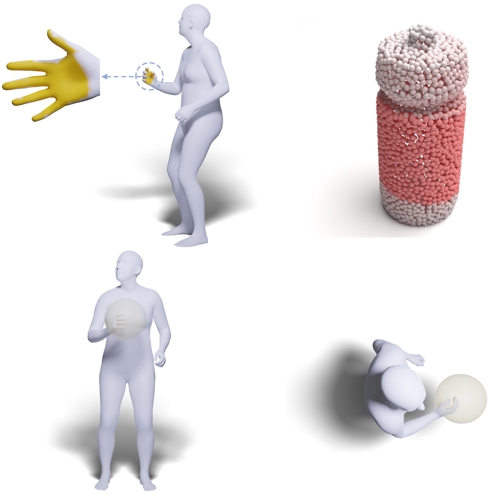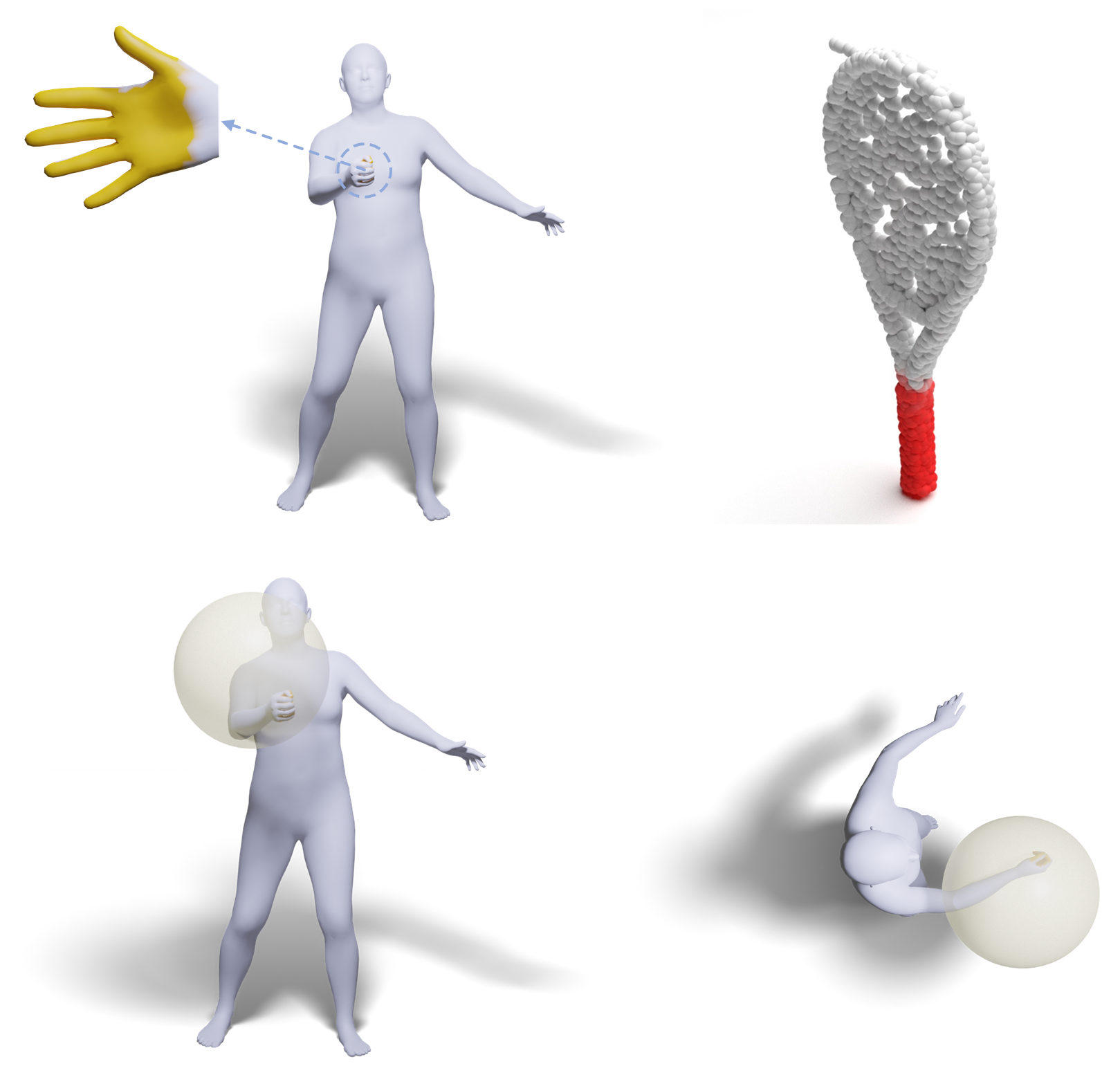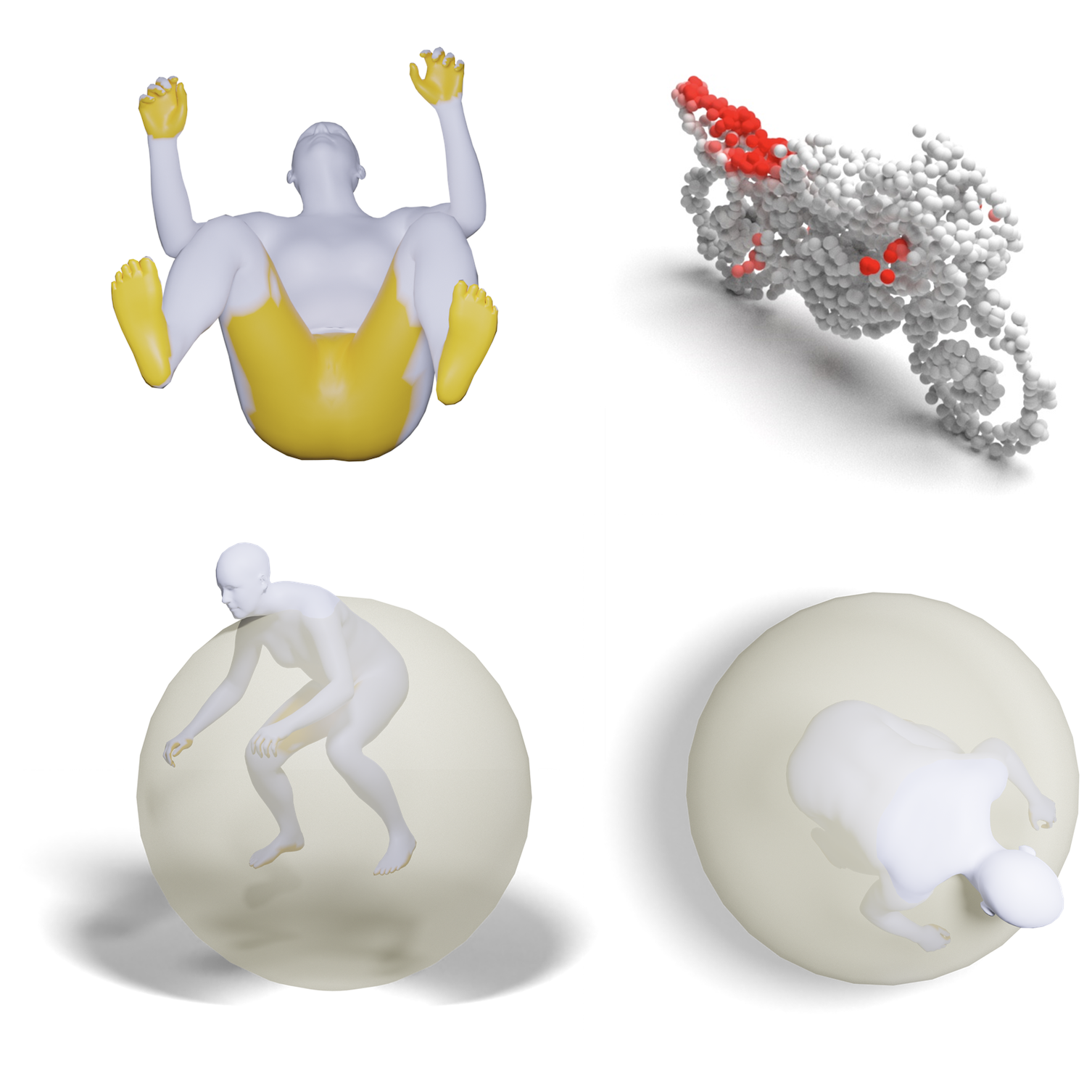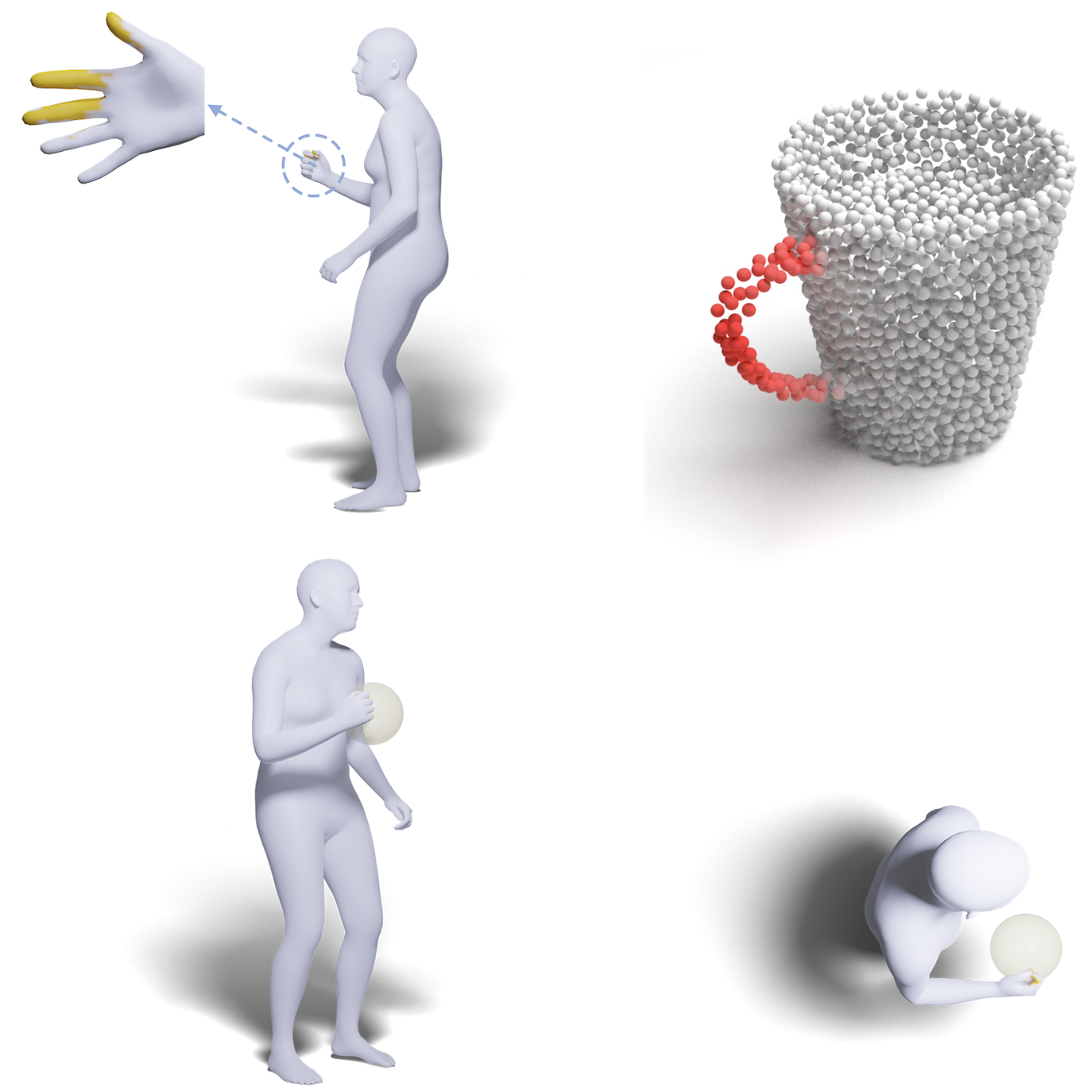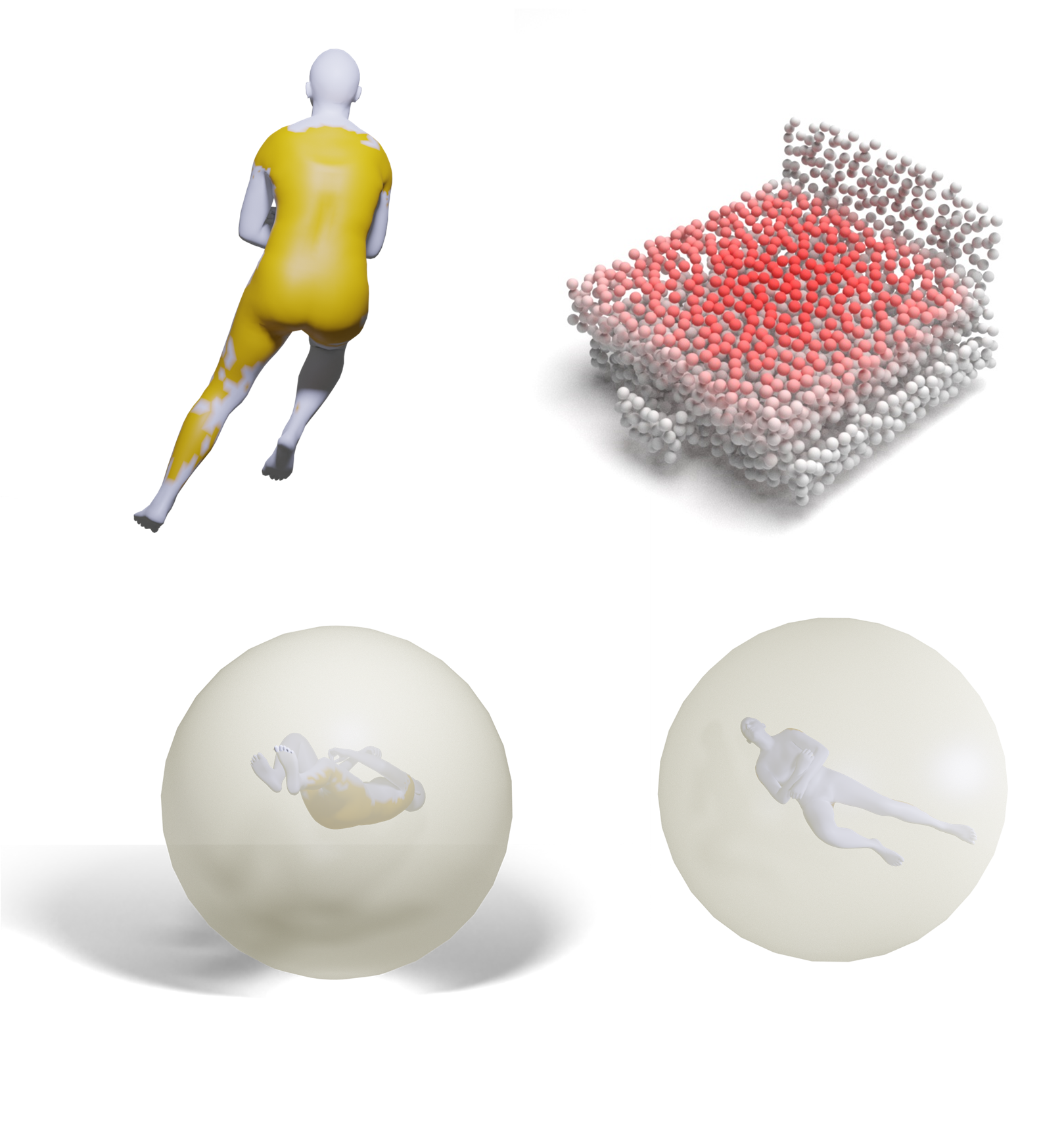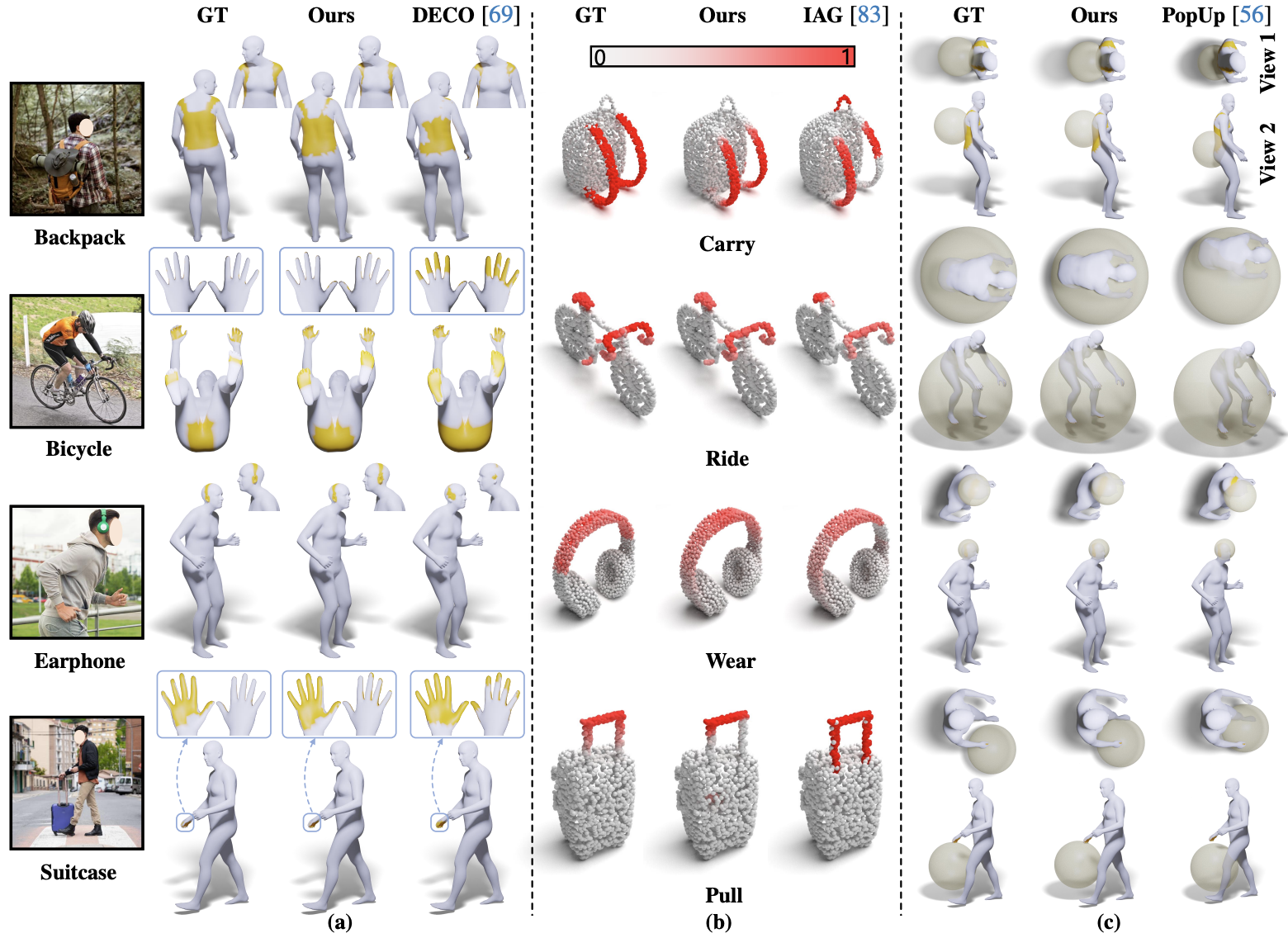
For an interaction image with paired geometries of the human and object, LEMON learns 3D human-object interaction relation by jointly anticipating the interaction elements, including human contact, object affordance, and human-object spatial relation. Vertices in yellow denote those in contact with the object, regions in red are object affordance regions, and the translucent sphere is the object proxy.



